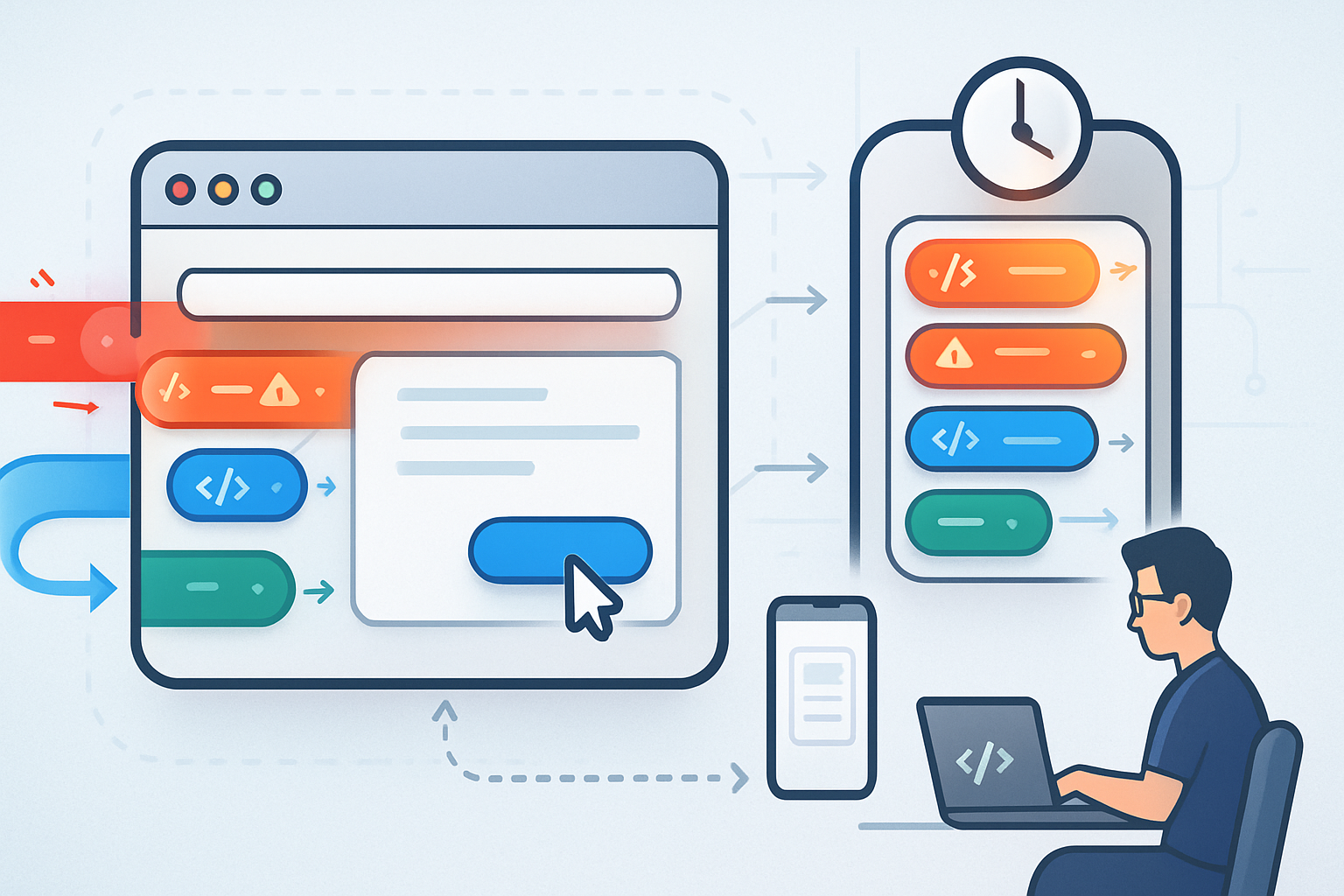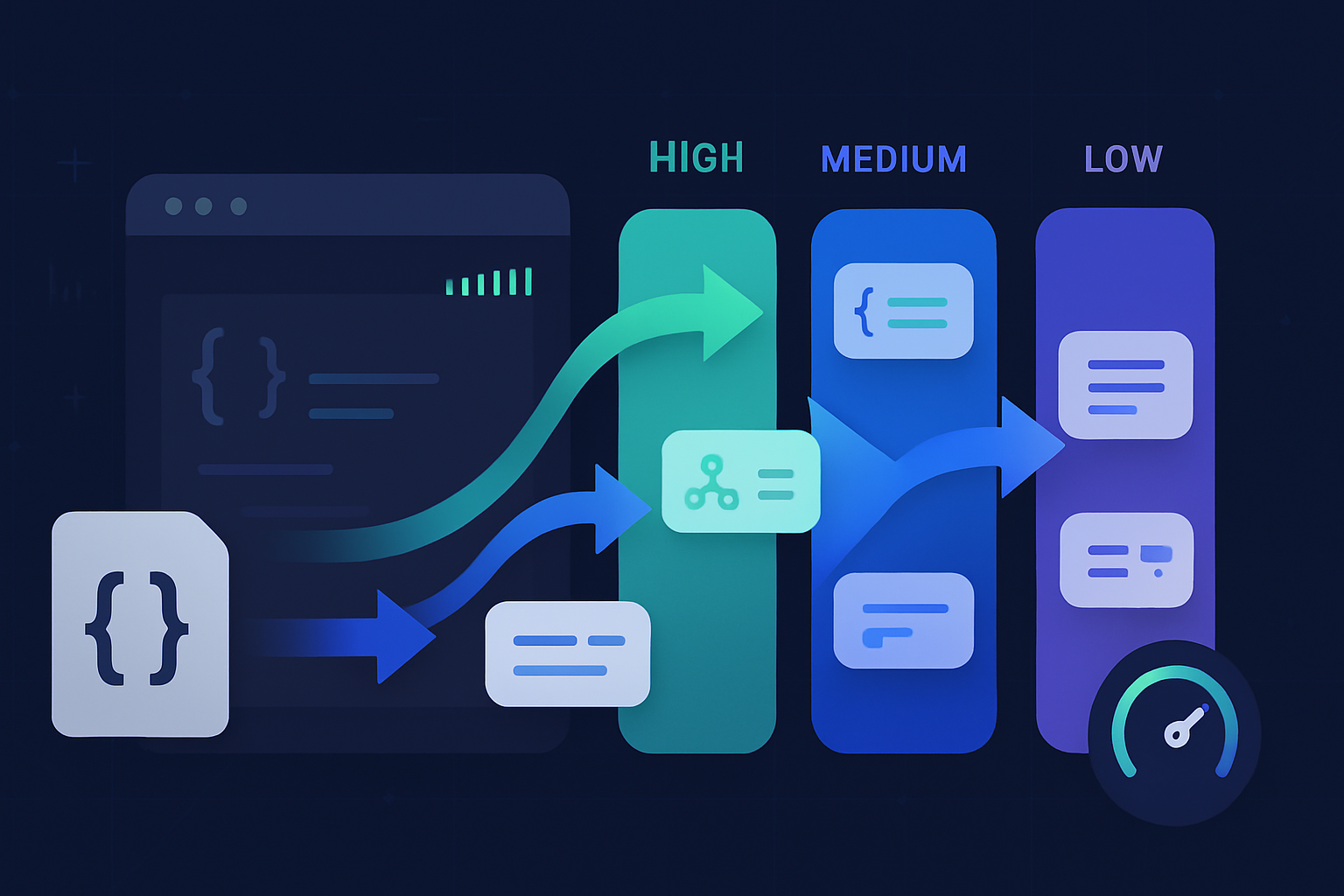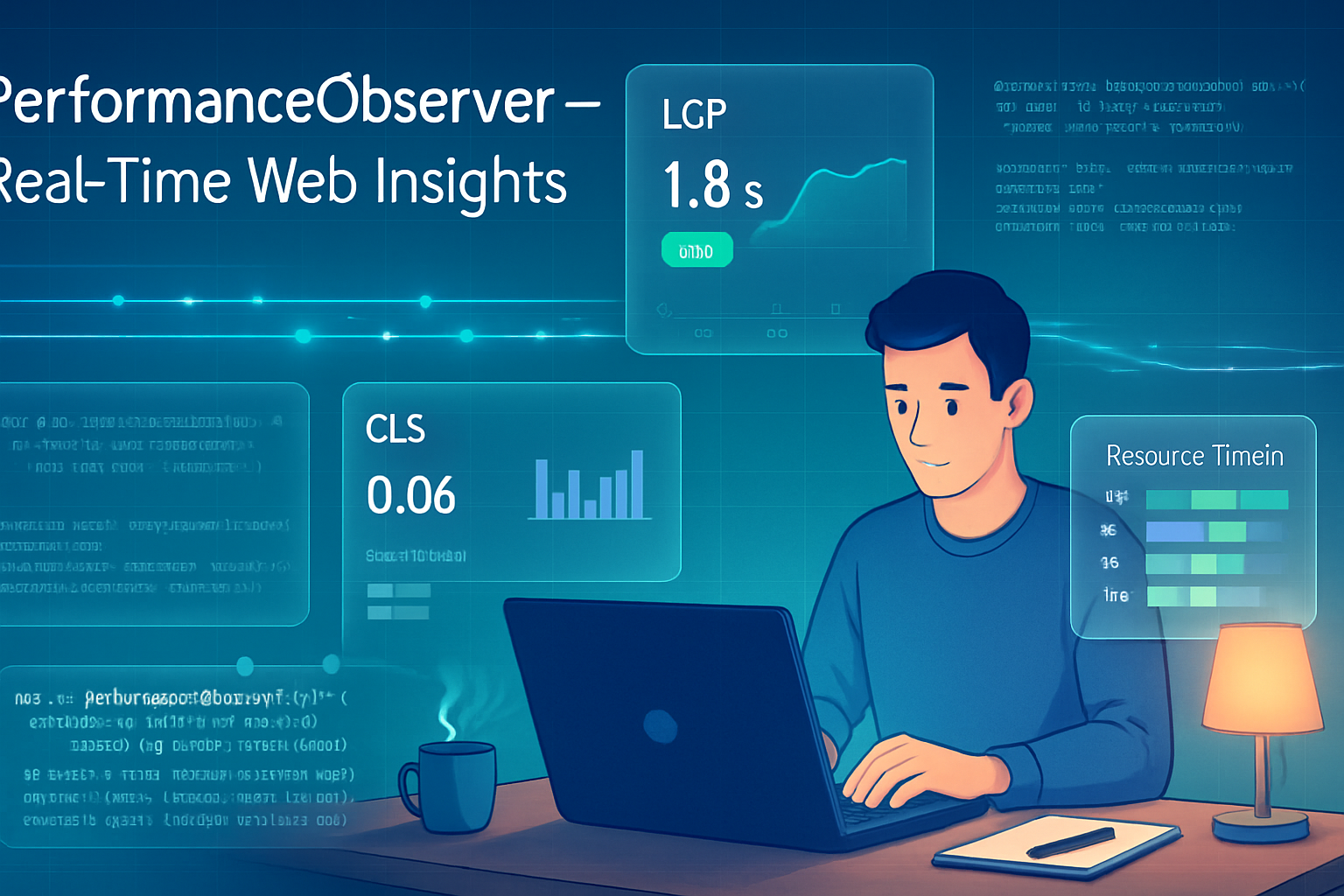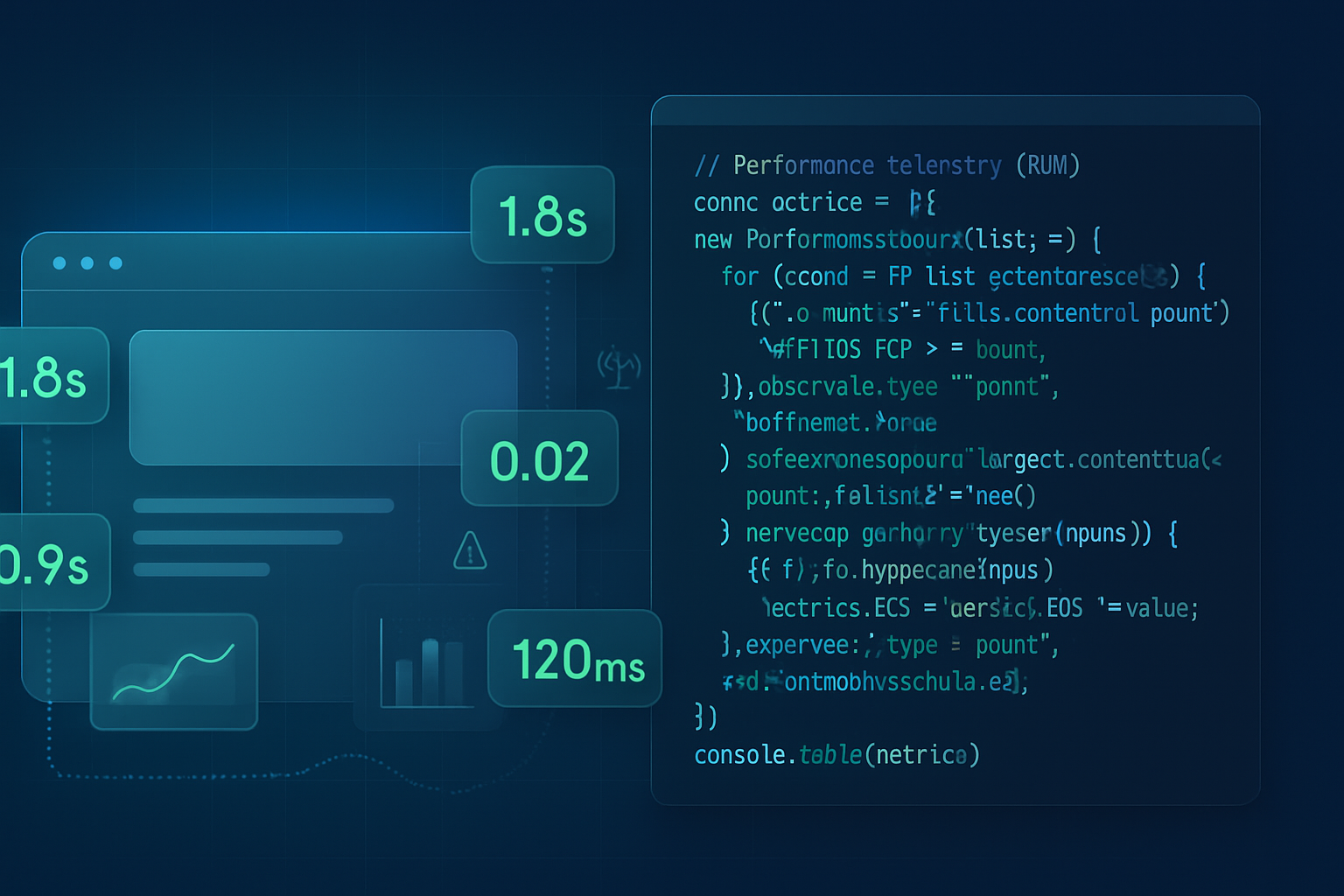· deepdives · 7 min read
Understanding the DOM Scheduling API: Revolutionizing UI Performance
Learn how the DOM Scheduling (Task Scheduling) API changes the way we schedule main-thread work. This tutorial compares the Scheduling API with requestAnimationFrame, requestIdleCallback and setTimeout, includes practical code examples, benchmarks and fallbacks, and shows how to make UIs feel snappier.
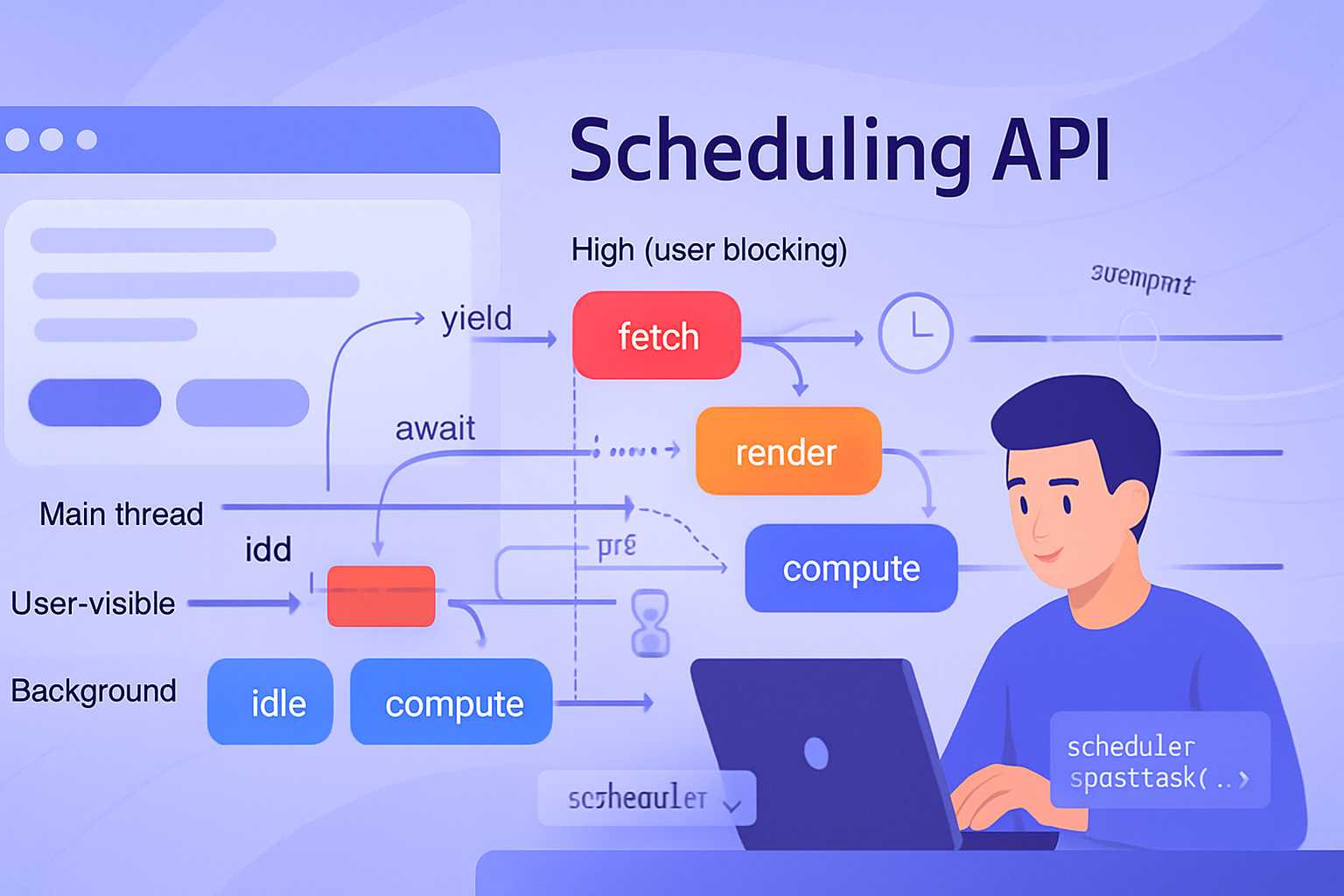
Why scheduling matters for UI performance
Browsers have to do a lot on the main thread: parsing HTML/CSS/JS, running event handlers, layout, painting and compositing. If your JavaScript monopolizes the main thread, the browser can’t keep up with input and frames - the UI stutters, taps feel delayed, and animations drop frames.
Historically developers used primitives like setTimeout, requestAnimationFrame (rAF) and requestIdleCallback (rIC) - each with trade-offs - to break up work or hint when to run it. The Scheduling API (often seen as scheduler.postTask) adds an explicit way to schedule tasks with priorities and better cooperative behavior so the browser can maintain responsiveness while your app does work.
Relevant reading:
requestAnimationFrame- https://developer.mozilla.org/en-US/docs/Web/API/window/requestAnimationFramerequestIdleCallback- https://developer.mozilla.org/en-US/docs/Web/API/Window/requestIdleCallback- Task Scheduling / Scheduling API (WICG) - https://github.com/WICG/scheduling-api
- Introduction to
scheduler.postTask()- https://web.dev/scheduler-posttask/
The existing primitives - strengths and limits
setTimeout / setInterval
- Simple but low-priority; timers are coalesced and affected by throttling.
- No frame-awareness; if you use it to update UI you might miss frames.
requestAnimationFrame (rAF)
- The right place for visual updates and animation work. The callback runs before the next frame.
- Should be short; long work inside rAF will still block rendering.
requestIdleCallback (rIC)
- Lets you run low-priority work during idle periods.
- Availability and behavior vary by browser; it’s not reliable for time-critical updates.
Web Workers
- Offloads JS off the main thread, great for heavy computations, but can’t directly touch the DOM.
Each tool helps, but none provides a built-in, cross-browser way to schedule main-thread tasks with priority hints and cooperative yielding back to the browser.
What the Scheduling API gives you (high level)
The Scheduling API (commonly exposed as scheduler.postTask) provides:
- A way to post tasks with explicit priority hints (e.g., user-visible vs background).
- Browser-level knowledge of priorities so the platform can make better decisions about when to run work.
- Cooperative scheduling semantics so tasks can be split and rescheduled without the app reimplementing complex heuristics.
Note: As of writing, availability differs across browsers - check support or use graceful fallbacks.
Basic usage examples
Feature-detecting and posting a short task:
if (window.scheduler && typeof window.scheduler.postTask === 'function') {
window.scheduler.postTask(
() => {
// short, non-blocking task
console.log('Task ran with scheduler.postTask');
},
{ priority: 'userVisible' }
);
} else {
// fallback - run later but cooperative with frames
requestAnimationFrame(() => console.log('Fallback rAF'));
}Scheduling with a priority and a timeout (pseudo-example - options vary by implementation):
window.scheduler.postTask(doWork, {
priority: 'userBlocking', // influences scheduling order
timeout: 5000, // fallback if task keeps being postponed
});Practical pattern: chunking work cooperatively
A common pattern to keep UI responsive is to split heavy tasks into chunks and yield between chunks so the browser can process input and paint. You can implement chunking with requestIdleCallback or requestAnimationFrame, and the Scheduling API makes it cleaner.
Example: progressively rendering 10,000 list items in small slices.
<ul id="list"></ul>const items = new Array(10000).fill(0).map((_, i) => `Item ${i}`);
const container = document.getElementById('list');
function renderChunk(startIndex) {
const CHUNK = 100; // items per chunk
const end = Math.min(startIndex + CHUNK, items.length);
for (let i = startIndex; i < end; i++) {
const li = document.createElement('li');
li.textContent = items[i];
container.appendChild(li);
}
if (end < items.length) {
schedule(() => renderChunk(end), { priority: 'userVisible' });
}
}
function schedule(fn, opts = {}) {
if (window.scheduler && window.scheduler.postTask) {
window.scheduler.postTask(fn, opts);
} else if ('requestIdleCallback' in window) {
requestIdleCallback(() => fn());
} else {
// Conservative fallback
setTimeout(fn, 0);
}
}
// Start
renderChunk(0);This approach:
- Renders the list progressively so the first items appear quickly.
- Lets the browser insert frames and process input between chunks.
- Uses the Scheduling API when available and falls back when it isn’t.
Measuring responsiveness and comparing approaches
You should test with real interactions (clicks, scrolls, typing) and use metrics like:
- Time to First Contentful Paint (FCP)
- First Input Delay (FID) or Time to Interactive (TTI)
- Frame rate and dropped frames
- Custom responsiveness measurements (time from user event to handler run)
Minimal synthetic test to measure responsiveness to a click while an expensive job runs:
function expensiveSyncWork(ms) {
const end = performance.now() + ms;
while (performance.now() < end) {
// busy loop -> blocks UI thread
Math.sqrt(Math.random());
}
}
// Handler that does blocking work
document.getElementById('testBtn').addEventListener('click', e => {
const start = performance.now();
// If this is scheduled poorly, the UI will be blocked and this handler delayed
expensiveSyncWork(200);
console.log('handler latency', performance.now() - start);
});
// Now schedule the expensive work while simulating UI interactions
function scheduleWorkBad() {
// naive: all work immediately on main thread
expensiveSyncWork(2000);
}
function scheduleWorkChunked() {
// chunk the work into 100ms slices
const slices = 20;
let i = 0;
function slice() {
expensiveSyncWork(100);
i++;
if (i < slices) {
// use rAF or scheduler to yield
if (window.scheduler && window.scheduler.postTask) {
window.scheduler.postTask(slice, { priority: 'background' });
} else if (window.requestIdleCallback) {
requestIdleCallback(slice);
} else {
setTimeout(slice, 0);
}
}
}
slice();
}What you’ll typically observe:
scheduleWorkBad()blocks the main thread; click handlers after starting it are delayed until it finishes.scheduleWorkChunked()yields between slices which lets the browser service input callbacks and paint frames.- Using
scheduler.postTaskwith appropriate priority gives the browser better hints so it can schedule the slices in a way that aligns with visible work.
Note: real-world numbers depend on hardware, browser and the complexity of the work.
A realistic UI example - async data + interactivity
Scenario: The app must fetch data and render many DOM nodes, but keep the UI responsive so the user can cancel or sort while data arrives.
Approach:
- Fetch data on a background thread (fetch already doesn’t block the main thread).
- When data arrives, construct DOM up to a safe limit synchronously so something appears quickly.
- Schedule the rest with
scheduler.postTaskatuserVisiblepriority (or fallback to rIC/rAF) in small chunks. - If the user acts (e.g. cancels), update a flag to stop scheduling further chunks.
This pattern makes the UI feel fast: the user sees content and can interact immediately, while the rest of the work completes cooperatively.
Choosing priorities and timeouts
The Scheduling API’s priority hints (nomenclature may vary) commonly include:
- userBlocking: high immediate priority (e.g., input handlers)
- userVisible: visible updates that should happen soon (e.g., rendering new content)
- background: deferrable work (e.g., analytics, cache warming)
Recommendations:
- Use high priority only for truly urgent tasks (blocking user input or critical UI updates).
- Use
backgroundfor non-essential tasks that can be postponed. - Use timeouts as fallbacks to ensure progress if higher priority work prevents your task from running indefinitely.
Graceful fallback and compatibility
Not all browsers have the Scheduling API. Feature-detect and provide sensible fallbacks:
- Prefer
window.scheduler.postTaskwhen available. - Fallback to
requestIdleCallbackfor low-priority work. - Use
requestAnimationFramefor frame-safe visual updates. - Worst-case fallback:
setTimeout(fn, 0).
Example helper:
function scheduleTask(fn, { priority = 'userVisible', timeout } = {}) {
if (window.scheduler && window.scheduler.postTask) {
return window.scheduler.postTask(fn, { priority, timeout }).signal;
}
if ('requestIdleCallback' in window && priority === 'background') {
return requestIdleCallback(fn);
}
if (priority === 'userVisible') {
return requestAnimationFrame(fn);
}
return setTimeout(fn, 0);
}Be mindful: requestIdleCallback may be throttled in background tabs and is not guaranteed to run quickly on busy pages.
Pitfalls and best practices
- Do not mistake scheduling for removing work: chunking and scheduling are techniques to make heavy work cooperative, but you should still minimize DOM thrashing and unnecessary recomputation.
- Keep scheduled tasks small - aim for < 16ms per chunk if you’re targeting 60fps, but shorter chunks (2–8 ms) often yield better responsiveness for input.
- Avoid long-running synchronous loops on the main thread - move heavy CPU work to Web Workers when possible.
- Beware of priority inversion: don’t schedule low-priority jobs that block higher-priority work by holding locks or busy loops.
- Always provide cancellation: user interactions may make scheduled work unnecessary. Use a cancellable pattern where possible.
When to use the Scheduling API vs other tools
- Use the Scheduling API when you need fine-grained control of main-thread tasks with priority hints and when you want the browser to make intelligent scheduling decisions.
- Use rAF when you need to run DOM reads/writes in sync with frame updates (animations, layout reads before paints).
- Use rIC for opportunistic, low-priority work when
scheduler.postTaskisn’t available. - Use Web Workers for heavy CPU-bound computations that don’t need direct DOM access.
Summary and recommended workflow
- Identify heavy or long-running tasks that impact interactivity.
- Prefer off-main-thread solutions (Web Workers) when feasible.
- Break unavoidable main-thread work into small chunks.
- Use the Scheduling API (
scheduler.postTask) with appropriate priorities when available. - Provide fallbacks:
requestIdleCallback,requestAnimationFrame,setTimeout. - Measure - use real devices and representative interactions to validate improvements.
The DOM Scheduling / Task Scheduling API doesn’t magically speed up work, but it gives the browser the information it needs to schedule tasks more intelligently and helps your app remain responsive under load.
Further reading
- Scheduling API (WICG): https://github.com/WICG/scheduling-api
- blog: scheduler.postTask() by Google / web.dev: https://web.dev/scheduler-posttask/
- requestAnimationFrame documentation: https://developer.mozilla.org/en-US/docs/Web/API/window/requestAnimationFrame
- requestIdleCallback documentation: https://developer.mozilla.org/en-US/docs/Web/API/Window/requestIdleCallback
